
views
Discouraging Your Cat from Scratching
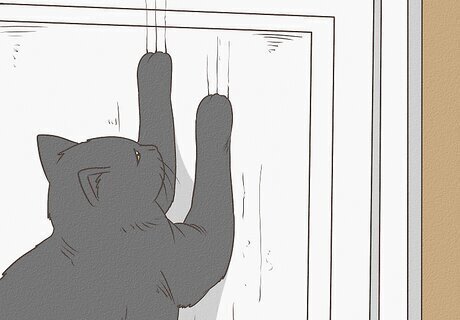
Determine why the cat is scratching the door. There are many reasons why a cat might scratch at your door. Figuring out the cause of the behavior can help you identify the best solution. For example, your cat may scratch because it wants your company or attention, because it is hungry, because it needs to go out to use the litter box, or because it is trying to exercise and sharpen its claws. Look for clues that might help you understand the behavior. For example, if your cat seems to scratch at random, even when it doesn’t want or need anything, it may simply be bored. In this case, you can try offering more forms of enrichment (such as puzzle feeders and scratching posts). If your cat meows or otherwise tries to get your attention while scratching, it may want something from you (such as affection or food).
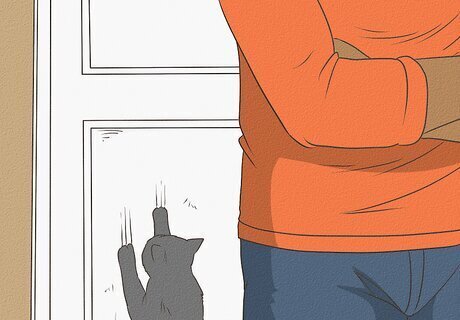
Ignore the scratching if your cat just wants attention. Your cat may be scratching the door to get your attention. If you let your cat in or even talk through the door to tell it to stop, you'll be reinforcing the behavior. Instead, ignore your cat's scratching and it’ll eventually stop. If you're concerned that your cat will cause damage to the door, consider purchasing a protective cover for the door.

Adjust your cat's feeding schedule. Some cats scratch at the door when they're hungry or want treats. If you usually feed your cat and let it roam around the house before closing the door, try feeding your cat and immediately closing the door. It will probably eat and then want to sleep.Tip: Try to play with your cat a lot before you feed it. If you wear your cat out, it's more likely to sleep after you feed it. To avoid sending the wrong message, don't wait for your cat to scratch the door and then feed it before closing the door again. You don't want to reward the scratching behavior, but you can try to prevent it.

Spray the door with a scented repellent. Purchase a spray repellent that contains essential oils that cats don't like. Look for a repellent that contains citrus, rosemary, or cinnamon essential oils. Then spray the door before you close it for the night. Your cat will avoid the door because it dislikes the smell. To make your own repellent, mix 1 part essential oil with 3 parts water and put it into a spray bottle. Some essential oils are toxic to cats. Talk to your vet about which oils are safe to use as a deterrent.

Attach double-sided tape to the door. A simple way to make scratching uncomfortable for your cat is to stick a few pieces of double-sided tape to the door. Your cat won't like the sticky sensation and should stop scratching the door. You can buy a product specifically made for this, like Sticky Paws or you can just use regular double-sided tape. You can remove the tape once your cat has learned not to scratch the door.
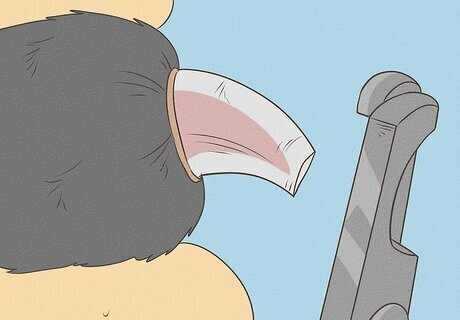
Trim your cat's nails. Cats may start scratching if their claws are long and they want to wear them down. To prevent your cat from doing this, check its nails every week and use a pair of small animal nail clippers to keep the claws short. If you don't feel comfortable trimming your cat's nails, take it to the vet for a trim. You can also place caps on your cat's claws to cover them, which may reduce scratching.
Redirecting the Scratching Behavior

Spend quality time with your cat. If your cat feels bored or neglected, they might scratch at the door because they want attention from you. To prevent your cat from scratching in the first place, try to spend time petting, playing, or talking with them before you close the door for the night. For example, you might give your cat extra cuddles for the 30 minutes before you close the door for the night.

Place scratching posts in your cat's room. You can buy or make an upright post that's covered with carpet or sisal for your cat to scratch. Every cat prefers a different type of scratching post. Some cats prefer scratching pads that lie flat on the ground. Some prefer fabric scratchers and some prefer rope or cardboard. Figure out which style your cat likes best. Consider sprinkling a little catnip around the post to encourage your cat to scratch on it. Place the scratching post close to the door where your cat likes to scratch. This way, when the cat returns to the area, they will have an appropriate place close by to redirect the behavior. Select a scratching post that’s big enough so the cat can stretch out fully while using it, and make sure it’s securely anchored so it doesn’t move while the cat is scratching on it.
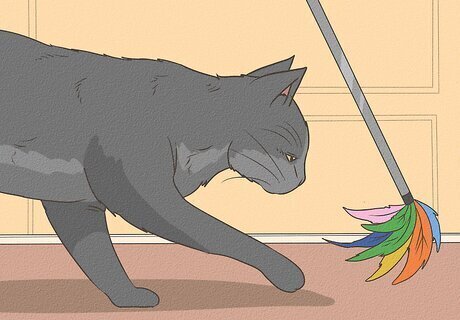
Offer your cat lots of stimulating toys. Your cat may scratch at the door if it feels bored, especially if it's in a room where there's not much to interact with. Scatter a few different types of toys in your cat's room so it's entertained. Try giving it toys with feathers, balls of aluminum foil, or toys that make noise.Did You Know? It's important to check cat toys for any loose parts that could come off and injure your cat. You should also ensure that your cat's room is comfortable if you expect it to sleep there. Give your cat a small bed or blankets to curl up in.
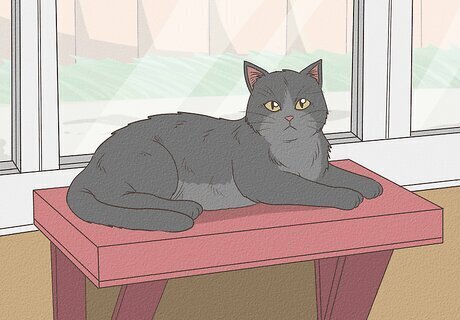
Give your cat access to a tower or perch. If your cat is scratching at the door because it feels cooped up, let it have access to a window or tower it can climb. Cats enjoy seeing their environment from a different view and it might keep your cat entertained for hours. If you can, give your cat access to an exterior window so it can watch birds.


















Comments
0 comment